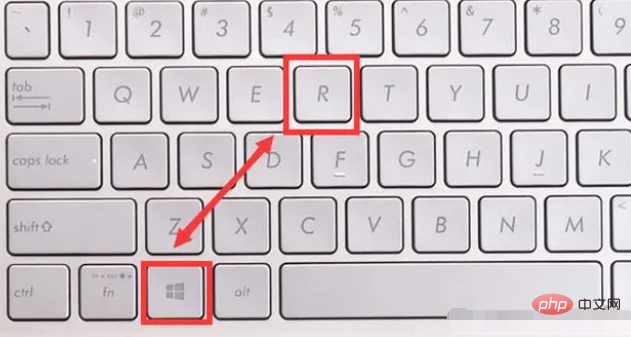How to delete database in mysql
Deletion method: 1. Use the "win r" key to open the "Run" window, enter "cmd", and press Enter to enter the cmd command window; 2. In the cmd window, execute "mysql -u root -p " command to log in to the MySQL server; 3. Execute the "DROP DATABASE IF EXISTS database name;" command to delete all tables in the specified database and permanently delete the database. The "IF EXISTS" option is optional. Setting this option can prevent deletion of unused files. An error occurred while the database exists.

The operating environment of this tutorial: windows7 system, mysql8 version, Dell G3 computer.
When the database is no longer in use, it should be deleted to ensure that valid data is stored in the database storage space. Deleting a database is to clear the existing database from the disk space. After clearing, all data in the database will also be deleted.
In MySQL, when you need to delete a created database, you can use the DROP DATABASE statement.
The DROP DATABASE statement deletes all tables in the database and permanently deletes the database. Therefore, you should be very careful when using this statement.
The following shows the syntax of the DROP DATABASE statement:
DROP DATABASE [IF EXISTS] 数据库名;
In this statement, specify the name of the database to be dropped.
MySQL will issue an error if you try to delete a database that does not exist.
To prevent an error from occurring when deleting a database that does not exist, you can use the
IF EXISTSoption. In this case, MySQL terminates the statement without issuing any error.
Note: After MySQL is installed, the system will automatically create two system databases named information_schema and mysql. The system database stores some database-related information. If you delete these With two databases, MySQL will not work properly.
DROP DATABASE statement to delete the database example:
1. Use the "win r" key to open the "Run" window, enter "cmd", and press Enter to enter cmd command window



#2. Log in to the MySQL server as the root user. Note that you can use your own database user instead of root.
mysql -u root -p Enter password: ********
Use the SHOW DATABASES statement to view all existing databases in the server:
SHOW DATABASES;
3. Use the DROP DATABASE statement to delete the database (test_db_del1 and test_db_del2)
DROP DATABASE test_db_del1; DROP DATABASE test_db_del2;
SHOW DATABASES;
[Related recommendations: mysql video tutorial 】
The above is the detailed content of How to delete database in mysql. For more information, please follow other related articles on the PHP Chinese website!

Hot AI Tools

Undresser.AI Undress
AI-powered app for creating realistic nude photos

AI Clothes Remover
Online AI tool for removing clothes from photos.

Undress AI Tool
Undress images for free

Clothoff.io
AI clothes remover

Video Face Swap
Swap faces in any video effortlessly with our completely free AI face swap tool!

Hot Article

Hot Tools

Notepad++7.3.1
Easy-to-use and free code editor

SublimeText3 Chinese version
Chinese version, very easy to use

Zend Studio 13.0.1
Powerful PHP integrated development environment

Dreamweaver CS6
Visual web development tools

SublimeText3 Mac version
God-level code editing software (SublimeText3)

Hot Topics
 1667
1667
 14
14
 1426
1426
 52
52
 1328
1328
 25
25
 1273
1273
 29
29
 1255
1255
 24
24
 Laravel Introduction Example
Apr 18, 2025 pm 12:45 PM
Laravel Introduction Example
Apr 18, 2025 pm 12:45 PM
Laravel is a PHP framework for easy building of web applications. It provides a range of powerful features including: Installation: Install the Laravel CLI globally with Composer and create applications in the project directory. Routing: Define the relationship between the URL and the handler in routes/web.php. View: Create a view in resources/views to render the application's interface. Database Integration: Provides out-of-the-box integration with databases such as MySQL and uses migration to create and modify tables. Model and Controller: The model represents the database entity and the controller processes HTTP requests.
 MySQL and phpMyAdmin: Core Features and Functions
Apr 22, 2025 am 12:12 AM
MySQL and phpMyAdmin: Core Features and Functions
Apr 22, 2025 am 12:12 AM
MySQL and phpMyAdmin are powerful database management tools. 1) MySQL is used to create databases and tables, and to execute DML and SQL queries. 2) phpMyAdmin provides an intuitive interface for database management, table structure management, data operations and user permission management.
 MySQL vs. Other Programming Languages: A Comparison
Apr 19, 2025 am 12:22 AM
MySQL vs. Other Programming Languages: A Comparison
Apr 19, 2025 am 12:22 AM
Compared with other programming languages, MySQL is mainly used to store and manage data, while other languages such as Python, Java, and C are used for logical processing and application development. MySQL is known for its high performance, scalability and cross-platform support, suitable for data management needs, while other languages have advantages in their respective fields such as data analytics, enterprise applications, and system programming.
 Solve database connection problem: a practical case of using minii/db library
Apr 18, 2025 am 07:09 AM
Solve database connection problem: a practical case of using minii/db library
Apr 18, 2025 am 07:09 AM
I encountered a tricky problem when developing a small application: the need to quickly integrate a lightweight database operation library. After trying multiple libraries, I found that they either have too much functionality or are not very compatible. Eventually, I found minii/db, a simplified version based on Yii2 that solved my problem perfectly.
 Laravel framework installation method
Apr 18, 2025 pm 12:54 PM
Laravel framework installation method
Apr 18, 2025 pm 12:54 PM
Article summary: This article provides detailed step-by-step instructions to guide readers on how to easily install the Laravel framework. Laravel is a powerful PHP framework that speeds up the development process of web applications. This tutorial covers the installation process from system requirements to configuring databases and setting up routing. By following these steps, readers can quickly and efficiently lay a solid foundation for their Laravel project.
 Solve MySQL mode problem: The experience of using the TheliaMySQLModesChecker module
Apr 18, 2025 am 08:42 AM
Solve MySQL mode problem: The experience of using the TheliaMySQLModesChecker module
Apr 18, 2025 am 08:42 AM
When developing an e-commerce website using Thelia, I encountered a tricky problem: MySQL mode is not set properly, causing some features to not function properly. After some exploration, I found a module called TheliaMySQLModesChecker, which is able to automatically fix the MySQL pattern required by Thelia, completely solving my troubles.
 Explain the purpose of foreign keys in MySQL.
Apr 25, 2025 am 12:17 AM
Explain the purpose of foreign keys in MySQL.
Apr 25, 2025 am 12:17 AM
In MySQL, the function of foreign keys is to establish the relationship between tables and ensure the consistency and integrity of the data. Foreign keys maintain the effectiveness of data through reference integrity checks and cascading operations. Pay attention to performance optimization and avoid common errors when using them.
 Compare and contrast MySQL and MariaDB.
Apr 26, 2025 am 12:08 AM
Compare and contrast MySQL and MariaDB.
Apr 26, 2025 am 12:08 AM
The main difference between MySQL and MariaDB is performance, functionality and license: 1. MySQL is developed by Oracle, and MariaDB is its fork. 2. MariaDB may perform better in high load environments. 3.MariaDB provides more storage engines and functions. 4.MySQL adopts a dual license, and MariaDB is completely open source. The existing infrastructure, performance requirements, functional requirements and license costs should be taken into account when choosing.








